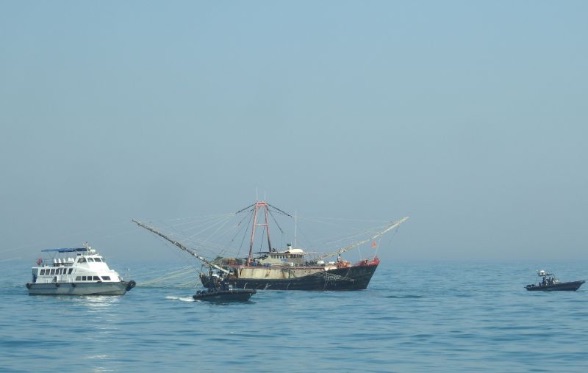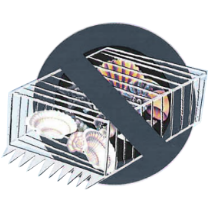Hong Kong
Artificial Reef Project
Control on fishing activities
Fishing activities in the deployment sites of AR are regulated by the Fisheries Protection Ordinance (Cap. 171) and/or Marine Parks Ordinance (Cap. 476).
Destructive fishing practices that are detrimental to fisheries and the marine ecosystem, including the use of explosive, toxic substances, electricity, dredging, suction and trawling devices for the purpose of fishing, are prohibited under the Fisheries Protection Ordinance (Cap. 171). In addition, all local fishing vessels must be registered with AFCD, and any person who engages in fishing in Hong Kong waters with the use or aid of such vessel (or any of its ancillary vessels) shall carry out fishing activities in accordance with the particulars and conditions specified in the certificate in terms of engine power, maximum number of ancillary vessels, fishing methods, fishing gears, fishing area and fishing period.

Prohibited fishing activities







For the marine parks, only holder of a valid marine park fishing permit granted in accordance with the Marine Parks and Marine Reserves Regulation (Cap. 476A) (the Regulation) may fish in marine parks. The permit allows the holder to conduct fishing activities in the specified marine park. Since the implementation of new fisheries management strategy in marine parks effective from 1 April 2020 (with a 2-year transitional period), commercial fishing has been banned in the four specified marine parks, namely the Hoi Ha Wan Marine Park, Yan Chau Tong Marine Park and Tung Ping Chau Marine Park in the eastern waters and the Sha Chau and Lung Kwu Chau Marine Park in the western waters.




